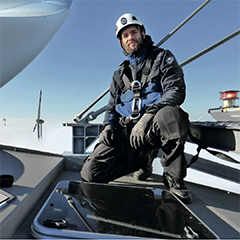Decision-makers in the wind-energy industry are faced with a choice of three options when their wind energy converters (WECs) approach the end of their design life: they can either dismantle, repower or continue the operation of their WECs. In many cases, available lifetime reserves allow cost-effective continued operation. TÜV SÜD explains how to prepare the expert report needed for lifetime extension quickly and easily.
After 20 years, the design life of most wind-energy converters (WECs) is nearing its end. In terms of both sustainability and economic efficiency, it may be worthwhile t commission expert determination of the lifetime reserves of the WECs and continue their operation for a limited period before repowering or dismantling them. Continued operation can make good sense for logistical reasons, particularly where large numbers of installations and wind farms are involved. This applies especially to cases where repowering is not an option and the power generated by the WECs brings in at least the operating costs. When choosing this option, decision-makers must consider safety-related, legal and economic aspects. TÜV SÜD recommends acting early before expiry of the design life if possible.



























